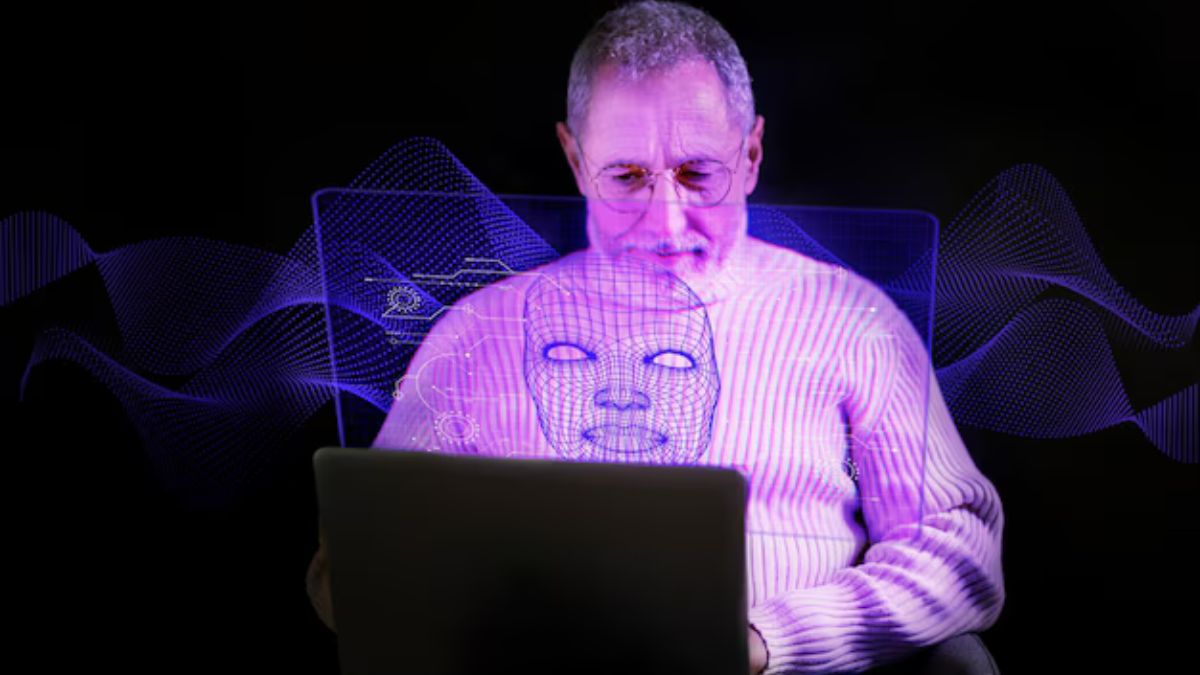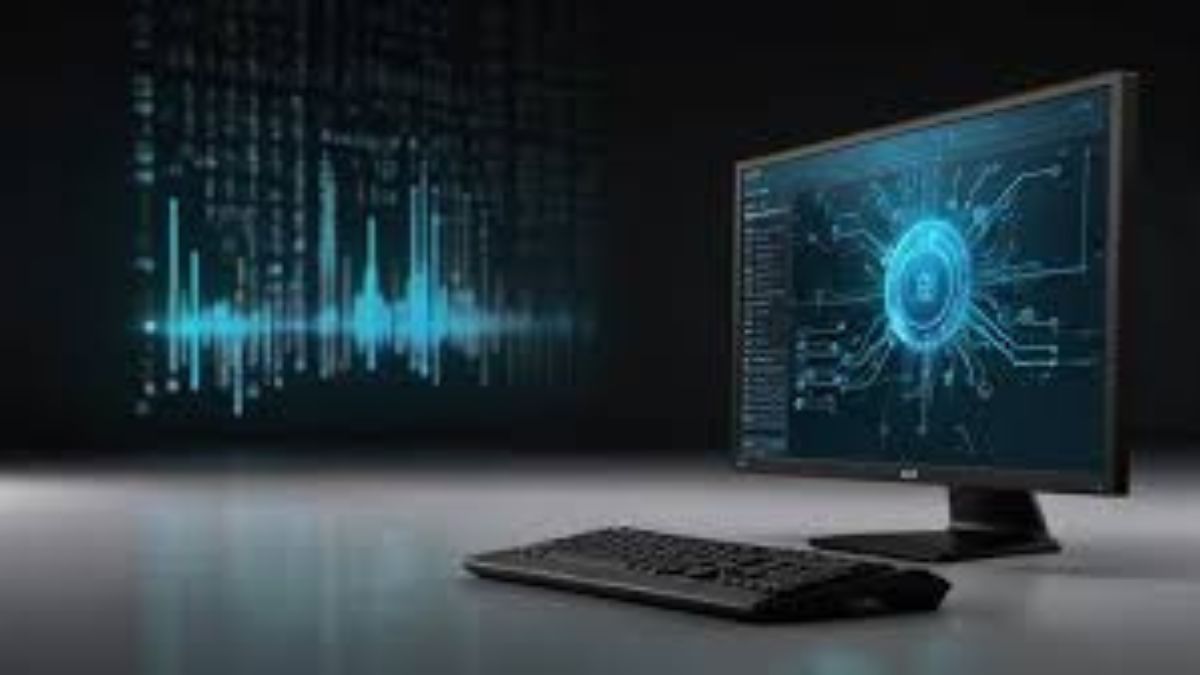TECHNOLOGY
The Intriguing Case of $rw8t1ct.exe: Is It a Threat or Just a Glitch?

In the ever-evolving world of technology, peculiar files occasionally emerge, sparking curiosity and concern. One such file is $rw8t1ct.exe, which has recently caught the attention of many users and tech enthusiasts alike. But what exactly is this mysterious executable? Is it a harmless glitch or a potential threat lurking in your system? As more people discover its presence on their devices, questions abound about its origin and purpose. Join us as we delve into the intriguing case of $rw8t1ct.exe to uncover whether it warrants our worry or if it’s just another digital anomaly fading into obscurity.
The discovery of $rw8t1ct.exe
The emergence of $rw8t1ct.exe has been nothing short of baffling. Users first stumbled upon this executable during routine system scans or while investigating an unfamiliar file in their directories. Its unassuming name quickly raised eyebrows.
Initial reports began circulating on tech forums, where individuals shared their findings and expressed mounting concerns. Some users reported strange behaviors within their systems, fueling speculation about the file’s legitimacy and purpose.
As more people encountered it, intrigue turned into anxiety. Questions flooded social media platforms: Is it malware? Could it compromise my data? The ambiguity surrounding $rw8t1ct.exe was palpable as discussions intensified among both novices and seasoned cybersecurity experts alike.
This little-known executable became a focal point for those passionate about safeguarding their digital environments, raising alarms that demanded further investigation into its nature and implications for security.
Initial reactions and concerns
When $rw8t1ct.exe first appeared, it sent ripples of anxiety through the tech community. Users spotted it lurking in system files, sparking immediate alarm.
Social media quickly filled with posts about strange behaviors linked to this mysterious executable. Reports of slow performance and unexpected crashes became common. Many feared they had stumbled upon a dangerous virus.
Antivirus programs flagged $rw8t1ct.exe as suspicious, adding fuel to the fire. The uncertainty led users to question their device’s security and overall well-being.
Some took drastic measures—uninstalling software or even resetting devices altogether. Others simply avoided their computers altogether, convinced that danger was just a click away.
The blend of confusion and fear made for an intriguing scenario in the digital landscape. Each user reacted differently, showcasing how instinctual responses can shape our interaction with technology.
Analysis by experts: Is it a threat?
Experts are divided on the nature of $rw8t1ct.exe. Some cybersecurity analysts see it as a potential threat, pointing out its unusual naming convention and lack of clear identification in databases. These characteristics often raise red flags.
Conversely, other specialists suggest that the file may be benign or merely a glitch within the system. They emphasize that many legitimate applications use similar naming patterns without malicious intent.
The context in which $rw8t1ct.exe appears also plays a significant role in assessment. If it surfaces during routine scans without accompanying suspicious behavior, experts might lean towards a non-threatening interpretation.
Ongoing monitoring is crucial. As more people encounter this file and share their findings, we may gain clearer insights into its true nature. For now, caution seems to be the prevailing sentiment among professionals navigating this digital enigma.
Possible explanations for $rw8t1ct.exe
The $rw8t1ct.exe file has sparked various theories among tech enthusiasts. Some believe it could be a legitimate program mistakenly flagged by antivirus software. This often happens with new or uncommon files that haven’t been adequately recognized yet.
Another possibility is that it might be a remnant from an uninstalled application. Files left behind can sometimes appear suspicious, leading to unnecessary anxiety for users.
On the flipside, there are concerns about malware disguising itself as benign executables. Cybercriminals frequently use misleading names to evade detection. Thus, vigilance is crucial when encountering unfamiliar files.
Some speculate that $rw8t1ct.exe could simply be a glitch in the operating system – an error message manifesting as an executable file due to corruption or outdated software components. Each theory adds layers of intrigue and uncertainty surrounding this enigmatic file.
Steps to take if you encounter $rw8t1ct.exe
If you stumble upon $rw8t1ct.exe on your system, it’s essential to act promptly. Start by not panicking; many files can look suspicious at first glance.
First, run a full antivirus scan. Use trusted software to check for any potential threats linked with the file. This will help identify if it’s malicious or simply a harmless glitch.
Next, consider checking its location. Legitimate files usually reside in specific folders within your operating system. If you find $rw8t1ct.exe hanging out somewhere unusual, that might raise red flags.
You could also search online for user experiences and expert analyses regarding this particular file name. Gathering information from various sources can provide clarity.
If the threat seems real or you’re unsure about handling it yourself, consult an IT professional for assistance. Taking proactive steps is key when dealing with unknown files like $rw8t1ct.exe.
Similar cases in the past
Throughout tech history, peculiar software has sparked curiosity and concern. One notable case involved the infamous “Windows 95 error,” where users reported mysterious files appearing unexpectedly. That glitch, like $rw8t1ct.exe, kept experts on their toes.
Another example is the “Sasser Worm,” which emerged in 2004. It caused major disruptions worldwide by exploiting vulnerabilities in Windows systems. Users were left questioning if it was a mere bug or an intentional attack.
Similarly, files labeled with strange alphanumeric codes often pop up during malware scans. These moments send shivers down spines but frequently reveal harmless debug programs instead of malicious threats.
The tech community remains vigilant as these situations unfold repeatedly over time. Patterns emerge that suggest not everything odd is sinister; sometimes they reflect quirks in complex software interactions rather than deliberate actions from cybercriminals.
Conclusion: Should we be worried or is it just a glitch?
The case of $rw8t1ct.exe is certainly intriguing. Users are understandably concerned when they encounter unfamiliar files on their systems, especially those that behave erratically or seem out of place. Experts have weighed in, suggesting a range of possibilities from benign software glitches to potential threats.
If you happen to come across $rw8t1ct.exe, take the recommended precautions. Scanning your device with reliable antivirus software and keeping backups of important data can go a long way in safeguarding your system.
Historically, there have been similar cases where genuine fears turned out to be unfounded. Many obscure file names often lead users down rabbit holes filled with paranoia and speculation.
As we navigate this digital landscape together, it’s essential to stay informed while also maintaining perspective. Whether $rw8t1ct.exe poses a real threat remains uncertain; however, vigilance is key. It might just be another line in the ongoing saga between technology and human curiosity about what lurks behind our screens.
TECHNOLOGY
Exploring Yell51x-Ouz4: What You Need to Know

Have you heard about Yell51x-Ouz4? This intriguing compound has recently gained attention in various scientific and industrial circles. With its unique properties, it’s sparking curiosity among researchers and industry professionals alike. But what exactly is Yell51x-Ouz4, and why should you care? In this article, we’ll dive deep into the origins of this fascinating substance, explore its characteristics, potential applications, and even the controversies that surround it. Buckle up as we embark on a journey to uncover everything you need to know about Yell51x-Ouz4!
How Yell51x-Ouz4 Was Discovered
Yell51x-Ouz4 emerged from an unexpected discovery in a remote laboratory. Researchers were exploring new compounds when they stumbled upon this intriguing substance.
The initial tests revealed unusual properties that piqued the interest of scientists worldwide. Its unique molecular structure suggested potential applications across various fields.
As word spread, more teams began investigating Yell51x-Ouz4, each contributing to a growing body of knowledge about its capabilities. Collaborations formed between chemists and industry experts eager to unlock its secrets.
Field studies highlighted its potential benefits, drawing attention from both academia and commercial sectors. This collaborative spirit fueled further research, propelling Yell51x-Ouz4 into the spotlight as a promising candidate for future innovations.
Characteristics and Composition of Yell51x-Ouz4
Yell51x-Ouz4 is a fascinating compound that draws attention for its unique characteristics. Its vibrant hue sets it apart, exhibiting shades of yellow and green that shimmer under certain light conditions.
This material boasts an intriguing molecular structure. It consists mainly of rare earth elements, which contribute to its unusual properties. The presence of these elements enhances the stability and durability of Yell51x-Ouz4.
Additionally, this compound has impressive thermal resistance. It can withstand high temperatures without undergoing significant changes in composition or appearance.
Researchers have noted its lightweight nature combined with remarkable strength. This makes Yell51x-Ouz4 suitable for various applications across industries.
The versatility continues with its ability to absorb specific wavelengths of light efficiently. This characteristic opens doors for innovative uses in energy storage and conversion technologies. Each aspect plays a role in understanding why Yell51x-Ouz4 garners so much interest from scientists today.
Potential Uses and Benefits of Yell51x-Ouz4
Yell51x-Ouz4 is capturing the attention of researchers and industries alike due to its versatile applications. One of its most promising uses lies in advanced materials science. The unique properties of this compound allow for enhanced durability and resistance, making it suitable for various manufacturing processes.
Additionally, Yell51x_Ouz4 shows potential in energy solutions. Its ability to conduct electricity efficiently could pave the way for breakthroughs in renewable energy technologies, such as solar panels and batteries.
The medical field is also exploring its benefits. Preliminary studies suggest that Yell51x-Ouz4 may have antibacterial qualities, opening doors for innovative treatments or coatings in healthcare settings.
Environmental advantages are noteworthy too. With increasing focus on sustainability, using Yell51x-Ouz4 could help develop eco-friendly alternatives in several industries while reducing waste and improving recyclability.
The Controversy Surrounding Yell51x-Ouz4
Yell51x-Ouz4 has sparked a whirlwind of debate among scientists and environmentalists alike. Some experts praise its unique properties, while others raise alarms about its potential impacts.
Critics argue that the extraction process poses significant risks to local ecosystems. They fear that mining Yell51x_Ouz4 could lead to habitat destruction and pollution. These concerns have fueled protests in various regions where exploration is underway.
On the other side, proponents highlight the economic benefits it may bring. They believe responsible extraction can create jobs and foster technological advancements. This clash of opinions illustrates the complexity surrounding Yell51x-Ouz4’s future.
The regulatory landscape remains uncertain as governments grapple with these conflicting viewpoints. Public opinion is divided, adding another layer of challenge for stakeholders involved in this heated discussion.
Safety Concerns and Precautions for Handling Yell51x-Ouz4
When dealing with Yell51x-Ouz4, it’s crucial to prioritize safety. This substance can present various risks, depending on its composition and the environment in which it’s found.
Always wear protective gear. Gloves, goggles, and lab coats provide an essential barrier against potential exposure. Skin contact or inhalation could lead to unforeseen reactions.
Ensure proper ventilation in any workspace involving Yell51x_Ouz4. Stagnant air may increase harmful effects. Using fume hoods is highly advisable when working with volatile compounds.
Proper storage cannot be overlooked. Keep Yell51x-Ouz4 in designated containers that are clearly labeled and stored away from incompatible materials.
Training is equally important for anyone handling this compound. Understanding its properties can help mitigate risks significantly and prepare individuals for emergency scenarios should they arise.
Conclusion: The Future of Yell51x-Ouz4
The future of yell51x-ouz4 holds significant promise. Researchers continue to explore its unique properties and potential applications. As interest grows, so does the investment in studies aimed at unlocking more of its secrets.
Its remarkable characteristics could lead to breakthroughs across various industries. From technology to medicine, the possibilities are exciting and expansive. However, addressing safety concerns is crucial for responsible usage.
With ongoing research and development efforts, yell51x-ouz4 may soon become a household name or an essential component in advanced solutions. The journey ahead is filled with potential, waiting for innovators to harness its capabilities fully.
HOME
A Creative Twist: How to Use Gumby JPEG in Your Next Project

Are you ready to add a splash of creativity to your next project? Enter the world of Gumby JPEG—a playful, quirky twist that can elevate your designs from ordinary to extraordinary. This unique format captures the nostalgic charm and iconography of Gumby, bringing an element of fun and flair that’s hard to resist. Whether you’re designing a logo or sprucing up your social media graphics, incorporating Gumby JPEG into your work opens doors to endless possibilities. Let’s explore how this vibrant asset can breathe new life into your creative endeavors!
Benefits of Using Gumby JPEG in Your Projects
Using Gumby JPEG in your projects opens the door to creativity. This playful character adds a unique flair that captivates audiences.
One of the standout benefits is versatility. Gumby can fit various themes, from nostalgic retro styles to modern designs. It allows you to infuse personality into your work effortlessly.
Another advantage is its eye-catching nature. Bright colors and distinct shapes draw attention quickly, making it perfect for marketing materials or social media posts that need to stand out.
Additionally, incorporating Gumby JPEG fosters engagement. People connect with familiar characters and can spark memories or feelings of joy, enhancing user experience across different platforms.
Using this style encourages innovation. Designers often think outside the box when working with whimsical elements like Gumby, leading to fresh ideas and compelling visuals that leave a lasting impression on viewers.
How to Incorporate Gumby JPEG into Design Projects
Incorporating Gumby JPEG into your design projects can bring a playful and nostalgic vibe. Start with logo design; the whimsical nature of Gumby adds personality that can resonate with your audience. Choose bold colors to make it pop.
For website design, use gumby images as engaging hero graphics or background elements. They can create an inviting atmosphere for visitors, making them feel at home.
Social media graphics benefit greatly from a touch of fun. Create eye-catching posts using Gumby JPEGs to capture attention in crowded feeds. Use animated versions for stories or ads; they draw users in effortlessly.
Remember to keep the designs cohesive while allowing Gumby’s charm to shine through. The balance between professionalism and playfulness is key in all applications.
A. Logo Design
Logo design is all about making a memorable impression. Incorporating a Gumby JPEG into your logo can add a playful touch that stands out from the crowd.
Think of how Gumby’s flexible shape represents adaptability and creativity. This could resonate well with brands aiming to showcase innovation or fun in their identity.
Use bold colors associated with Gumby to make your logo pop. Whether it’s for a children’s brand, an art studio, or even a tech startup looking for quirky appeal, this character can be just what you need.
Experiment with different styles by integrating elements of Gumby while keeping your core message clear. The versatility of the character allows for endless possibilities in creating something unique and engaging.
Remember, simplicity often leads to strong recognition—let the charm of Gumby enhance rather than overpower your design vision.
B. Website Design
Incorporating a Gumby JPEG into website design can add a playful and whimsical touch. This unique style breaks the monotony of standard web aesthetics, making your site memorable.
Use it as an eye-catching hero image or background. A vibrant Gumby graphic can instantly draw visitors’ attention to key areas like call-to-action buttons or promotional banners.
Consider integrating animated versions of Gumby JPEGs for added engagement. Subtle animations create movement that keeps users interested while navigating through your content.
When placing these images, ensure they align with your brand’s voice and message. The right balance between fun and professionalism is crucial in maintaining credibility.
Don’t forget about mobile optimization! Ensure that any Gumby designs look just as good on smaller screens as they do on desktops, enhancing user experience across devices.
C. Social Media Graphics
Using Gumby JPEG in social media graphics can elevate your brand’s presence. The quirky and playful nature of this character captures attention instantly.
Imagine a vibrant post featuring Gumby engaging with your audience. Whether it’s announcing a new product or promoting an event, the fun element adds personality to your message.
You can create eye-catching stories on platforms like Instagram or Snapchat by incorporating animated elements of Gumby. This fosters interaction and encourages shares among users.
Don’t shy away from experimenting with colors and styles that align with your brand while using Gumby JPEG. It opens up endless creative possibilities for unique content that stands out in crowded feeds.
Incorporating witty captions alongside Gumby’s visuals can further enhance engagement, making followers stop scrolling to take notice. Your posts will not only convey information but also entertain, creating memorable connections with your audience.
Tips for Using Gumby JPEG Effectively
To make the most of your gumby jpeg, start by choosing high-quality images. Grainy or pixelated graphics can detract from your design. Ensure that any Gumby JPEG you select is clear and vibrant.
Consider color harmony in your projects. The playful nature of Gumby pairs well with bright colors. Use complementary shades to make these designs pop while maintaining a cohesive look.
Experiment with scale and positioning. A small Gumby figure can create visual interest as an accent, while a large image might serve as a bold statement piece.
Layering elements adds depth to your work too. Overlay text or other graphical elements onto the gumby jpeg for dynamic visuals that grab attention.
Maintain brand consistency even when using whimsical graphics like this one. Align its tone and style with your overall branding strategy for seamless integration into various platforms.
Where to Find Quality Gumby JPEG Images
Finding quality Gumby JPEG images can be a fun adventure. Start by exploring stock photo websites. Platforms like Shutterstock and Adobe Stock often have a variety of creative options.
Another great resource is open-source image sites, such as Unsplash or Pixabay. These platforms provide free high-quality images, including those with a playful twist like Gumby art.
Social media groups also serve as treasure troves for unique designs. Join graphic design forums on Facebook or Reddit to connect with other creatives who share their work.
Don’t overlook Etsy either! Many talented artists offer custom Gumby JPEGs that you can purchase and use in your projects.
Consider creating your own Gumby-inspired designs using tools like Canva or Photoshop if you want something truly one-of-a-kind. This way, you capture the essence of what makes Gumby so charming while adding your personal touch.
Creative Examples of Using Gumby JPEG in Projects
Gumby JPEG can breathe new life into various design projects. Imagine a vibrant restaurant menu featuring Gumby as the playful mascot, drawing attention to daily specials.
In fashion, consider using Gumby imagery on t-shirts or tote bags. This quirky touch can appeal to both nostalgia and fun-loving shoppers.
For digital marketing campaigns, integrating Gumby JPEG in email headers adds an unexpected twist that makes recipients smile. It sets the tone for engaging content ahead.
Animated GIFs of Gumby’s iconic poses are perfect for social media posts. They capture attention quickly and encourage shares.
Don’t forget about event flyers! A colorful Gumby graphic can create excitement around community events or parties, ensuring they stand out in crowded inboxes or bulletin boards.
Using this unique image allows your creativity to shine while adding an element of whimsy wherever it’s placed.
Conclusion
The Gumby JPEG is a playful and versatile element that can elevate your design projects in unique ways. Whether you’re working on logos, websites, or social media graphics, its quirky charm can make your work stand out from the crowd.
Incorporating gumby jpeg images not only adds personality but also helps convey messages with creativity. The benefits are clear: increased engagement, improved brand recognition, and a memorable visual experience for your audience.
With various tools available online to source quality images and examples showcasing innovative uses of this fun graphic style, there’s no limit to what you can create. Embrace the whimsy of gumby jpeg in your next project; it just might be the touch that transforms ordinary into extraordinary.
TECHNOLOGY
The Rise of //TurboGeek.org: How It Became a Hub for Gearheads Everywhere

Welcome to the world of //TurboGeek.org, a thriving online sanctuary where car enthusiasts unite. This digital haven has quickly become the go-to destination for gearheads from all walks of life. From novice tinkerers to seasoned mechanics, everyone finds their place here.
//TurboGeek.org isn’t just another automotive website; it’s a community-driven platform that breathes life into the passion for cars and everything related. Whether you’re looking for tips on enhancing your ride or wanting to connect with like-minded individuals who share your fervor, TurboGeek.org is where you need to be.
Join us as we explore how this remarkable site came into existence and why it has captured the hearts of so many across the globe!
The Origins of //TurboGeek.org
TurboGeek.org was born from a shared dream among automotive enthusiasts. A group of passionate friends wanted to create a space that celebrated their love for cars and fostered camaraderie among gearheads.
They noticed the growing disconnect in traditional car forums, where valuable information often got lost amid noise. With this revelation, they set out to build an inclusive platform focused on quality content and genuine interaction.
The site launched with a clear mission: to provide reliable resources while cultivating a welcoming community. From day one, TurboGeek.org aimed to empower its members through knowledge sharing and collaboration.
As word spread about this unique hub, it quickly attracted attention beyond local borders. Enthusiasts found solace in its vibrant discussions and engaging articles, sparking excitement across the automotive landscape. What started as a small idea has now grown into something truly special for countless fans worldwide.
The Community of Gearheads
At TurboGeek.org, the heartbeat of the platform is its vibrant community. Gearheads from all walks of life come together to share their passion for everything automotive.
Members engage in lively discussions about favorite builds, modifications, and racing experiences. The forums buzz with excitement as users post pictures of their latest projects or seek advice on repairs.
It’s a space where knowledge flows freely, fostering camaraderie among enthusiasts. Whether you’re a seasoned mechanic or just starting your journey into car culture, there’s an inviting atmosphere that welcomes everyone.
Events are organized regularly, allowing members to connect beyond the screen. From local meet-ups to larger conventions, these gatherings help forge lasting friendships rooted in shared interests.
This robust community is not just about cars; it embodies collaboration and innovation in every thread and conversation.
Diverse Range of Content on TurboGeek.org
TurboGeek.org is a treasure trove of content for automotive enthusiasts. From in-depth articles on the latest car models to DIY repair guides, there’s something for everyone.
The site features reviews that dig deep into performance metrics and real-world experiences. Gearheads can find comparisons between classic cars and modern marvels, catering to diverse interests.
Video content adds another layer of engagement, showcasing everything from tuning tutorials to thrilling road tests. These clips give members an up-close look at vehicles in action.
Podcasts hosted by industry experts dive into current trends and innovations, making it easy for users to stay informed while on the go.
With forums buzzing with discussions about modifications and restorations, TurboGeek.org fosters collaboration among like-minded individuals who share a passion for all things automotive.
Exclusive Features and Services for Members
TurboGeek.org offers an array of exclusive features tailored for its members. One standout service is the personalized car build consultations. Members can engage with expert gearheads who provide insights and tips on optimizing their rides.
Additionally, TurboGeek.org hosts regular virtual meetups. These gatherings allow enthusiasts to share experiences, troubleshoot issues, and showcase their latest projects. The sense of community is palpable during these sessions.
Members also gain access to premium content, including in-depth articles and video tutorials that cover advanced techniques not found elsewhere. This resource-rich environment fosters continuous learning among automotive aficionados.
Exclusive discounts from partner brands further sweeten the deal for members. From performance parts to tools, these savings make upgrades more accessible while strengthening connections within the automotive industry.
//TurboGeek.org’s Impact on the Automotive Industry
TurboGeek.org has revolutionized how automotive enthusiasts connect and share knowledge. By creating a virtual space for gearheads, it fosters collaboration that transcends geographical boundaries.
The platform’s influence extends to grassroots movements within the industry. It champions independent projects and DIY modifications, empowering individuals to take control of their automotive journeys.
Moreover, TurboGeek.org serves as a launchpad for emerging trends in car customization and technology. Members actively discuss innovations like electric vehicle conversions and advanced tuning techniques, pushing the community forward.
Manufacturers also pay attention. They recognize the value of feedback from passionate users who shape product development based on real-world experiences shared on the site.
Through its vibrant discussions and shared passion, TurboGeek.org is not just a hub but a catalyst for change in the automotive landscape.
Expanding Beyond Cars: TurboGeek.org’s Evolution
TurboGeek.org has transformed from a niche automotive site into a comprehensive hub for all things mechanical. As the community grew, so did its interests. Gearheads found common ground not just in cars but in motorcycles, trucks, and even machinery.
This evolution reflects a broader passion for engineering and innovation. Enthusiasts began sharing insights on electric vehicles and alternative fuels, showcasing their commitment to sustainability.
Moreover, TurboGeek.org embraced technology with articles about DIY projects that extend beyond traditional gearhead topics. Members now dive into robotics, drones, and tech gadgets that enhance the driving experience.
The platform has become more than just a website; it’s an ecosystem where creativity flourishes. The vibrant discussions foster collaboration among diverse communities united by their love for mechanics and design. Each new topic enriches the site’s offerings while attracting fresh perspectives from around the globe.
Conclusion
//TurboGeek.org has transformed into a vibrant community and resource for automotive enthusiasts around the globe. From its humble beginnings, it has grown to become a significant hub where gearheads can connect, share knowledge, and celebrate their passion for all things automotive.
With an impressive array of content ranging from DIY guides to industry news, //TurboGeek.org caters to everyone—whether you’re a seasoned mechanic or just starting your journey into car culture. The platform’s exclusive features enhance user experience, providing members with tools that make exploring their interests even more rewarding.
Its impact on the automotive industry is undeniable. By fostering collaboration and innovation among enthusiasts and professionals alike, TurboGeek.org plays a pivotal role in shaping trends within the sector. Moreover, as it continues to expand beyond cars into other realms of motorized vehicles like motorcycles and trucks, its audience grows broader each day.
This evolution speaks volumes about the site’s commitment to serving gearheads everywhere. At TurboGeek.org, there’s always something exciting happening—a testament to why it’s not just another website but rather a thriving ecosystem for aficionados passionate about speed and performance.
-

 TECHNOLOGY10 months ago
TECHNOLOGY10 months agoExploring the Benefits of Using Tanzohub for Your Blog
-

 ENTERTAINMENT10 months ago
ENTERTAINMENT10 months agoThe Legendary Career of the Half of a 1990s-2000s Rock Duo with Six Grammys
-

 HEALTH9 months ago
HEALTH9 months agoThe Ultimate Guide to Using Greenheal.net for Holistic Wellness
-

 HEALTH10 months ago
HEALTH10 months agoThe Secret Ingredient for Radiant Skin: All About Oridzin
-

 HEALTH11 months ago
HEALTH11 months agoQxefv: The Ultimate Solution for Stress Relief and Wellness
-

 NEWS9 months ago
NEWS9 months ago5 Fascinating Facts About Mgj Doppy Tlae That Will Blow Your Mind
-

 ENTERTAINMENT7 months ago
ENTERTAINMENT7 months agonhentai 455058: The Ultimate Guide to Understanding this Fan-Favorite Manga
-

 NEWS11 months ago
NEWS11 months agoUnlocking the Potential of SSIS 816 in Data Integration
